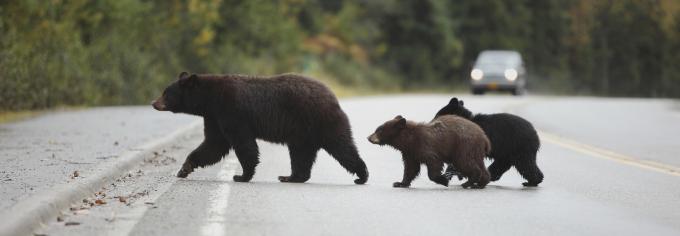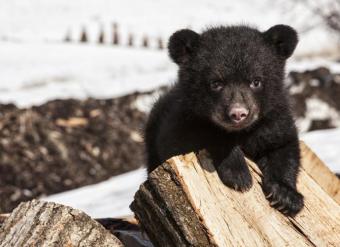Bears

There are three main species of bear in Canada, including the polar bear, grizzly (or brown) bear and the black bear. Each is distinct in size, behaviour and range, though they all belong to the same taxonomic family (Ursidae). And though the ranges and behaviours of these species vary greatly, the causes of conflict with each have similar elements.
Bears are intelligent, family-oriented animals that are driven by the same basic needs as all wildlife: finding food, water and shelter.
Concerns
With the ongoing growth of municipalities from coast to coast, and the environmental impact of climate change, the territory bears can call home continiously shrinks. And as these municipalities grow, human impact increases – our trash, compost and recycling quickly becomes a regular meal for wildlife.
In most cases where bear-human conflict has occurred, the cause is invariably related to resources. Be it habitat loss, the presence of food, or immature bears who were left orphans, human action is frequently the source of the problem; and human behaviour is the solution.
 Solutions
Solutions
Programs like Bear Aware, Bear Wise and Bear Smart are all extremely effective because at their very core, they address these human-caused issues.
As is the case in almost any conflict situation, the first step people need to take is related to food – cleaning up yards, removing fallen fruits, keeping pet food indoors, and using hard-sided, wildlife-proof garbage containers is essential.
After that, you need to look at subtle indicators: what else is causing a bear to wander into your area?
When a bear is present, you need to know how to keep yourself, your family – and yes, the bear – safe. If a polar bear or grizzly bear is approaching, find a safe place indoors and contact a local bear program affiliate or conservation authority officer. But for black bears, many hazing techniques can be effective, such as noise makers, thrown objects or flashing lights. It’s always best to talk to an expert prior to attempting these hazing techniques on your own.
Many municipalities have successfully implemented co-existence strategies for bears that include proper waste management, hazing teams and more. The Fur-Bearers recommends bear communities look to experts such as those organizations listed below for further assistance in developing bear co-existence programs.